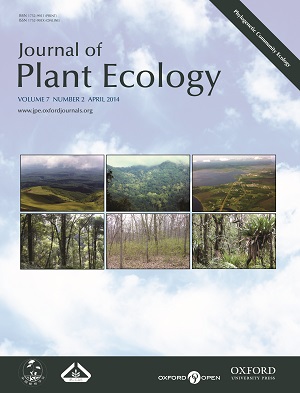Current Issue
-
 Volume 7 Issue 2
Volume 7 Issue 2
TL: The northern slope of Changbaishan, China. A paper in this issue investigates the phylogenetic structure and diversity of angiosperms in forests along an elevational gradient on this slope. Photo taken by Zhanqing Hao. TM: Xishuangbanna forest dynamic plot in southwestern China. Photo taken by Xiaoxue Mo. TR: Boreal forest landscape under human disturbance in Alberta, Canada. Photo credit: Kirstan Tereschyn. BL: Gutianshan forest dynamic plot in eastern China. Photo taken by Xiangcheng Mi. BM: Common buckthorn (Rhamnus cathartica L.) forms a monotypic stand in the understory of a forest in central Minnesota, USA. A paper in this issue investigates how resident plant phylogenetic diversity influences invasibility by common buckthorn. Photo credit: Alexander Roth. BR: Restinga forest plot at Ilha do Cardoso State Park, São Paulo, Brazil. Photo taken by Alexandre A de Oliveira.
IF: 3.9
CiteScore: 5.7
CiteScore: 5.7
Editors-in-Chief
Yuanhe Yang
Bernhard Schmid
Yuanhe Yang
Bernhard Schmid
CN 10-1172/Q
ISSN 1752-9921(print)
ISSN 1752-993X(online)
ISSN 1752-9921(print)
ISSN 1752-993X(online)







